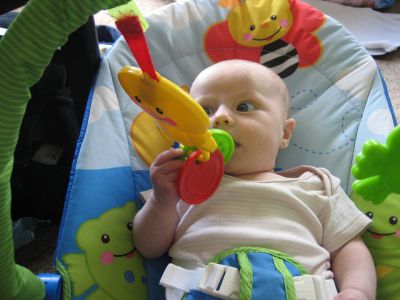Fine Motor involves the development of the small muscles of the body. The development of small muscles enables infants to carry out actions like grasping small objects. The fine motor skills developed from infancy continues throughout childhood in preparation of fine motor tasks such as writing.
Fine Motor Development Milestones
From 0 to 3 months
Infants begin exploring their environment by using their sight. Infants learn to co-ordinate their hand and eye movements so that they can begin manipulating toys, objects and begin using their hands as well.
Milestones Achieved
- begins to open and close hands
- brings two hands together to grasp objects
- starts reaching to swipe at dangling objects
- able to grasp object put into hands
From 3 to 6 months
During this stage, infants will begin to “foot play'. When an infant becomes excited they will begin kicking at random. An infant is also most likely to catch hold of one foot and put it in their mouth.
Milestones Achieved
- grasps rattles and objects with whole palm
- begins to transfer an object from one hand to another
- starts reaching for objects
- begins to hold onto an object
- places objects to mouth once learnt to grasp objects
- starts waving hands and feet excitedly
- reaches for and grasp objects, using one hand to grasp
- plays with feet and toes
From 6 to 12 months
There are so many things for an infant to discover and during this stage. It’s all about exploration through looking and touching. An infant will spend most of their time watching the world around them, taking in information, getting directly involved and often combining both touch and sight.
Milestones Achieved
- successfully reach out and grasp toy
- transfers objects from hand to hand
- picks up and pokes small objects with thumb and finger
- picks up and throws small objects
- grasps spoon in palm, but poor aim of food to mouth
- uses hands to feed self
- uses raking grasp
- uses pincer grasp (grasp using thumb and index finger)
- bangs two one-inch cubes together
- puts objects into container
- takes objects out of container
- pokes with index finger
- tries to imitate scribbling
Fine motor development supports other functions and actions such as grasping small objects, hand/eye co-ordination, actions like building with construction toys and the ability to hold a crayon.
